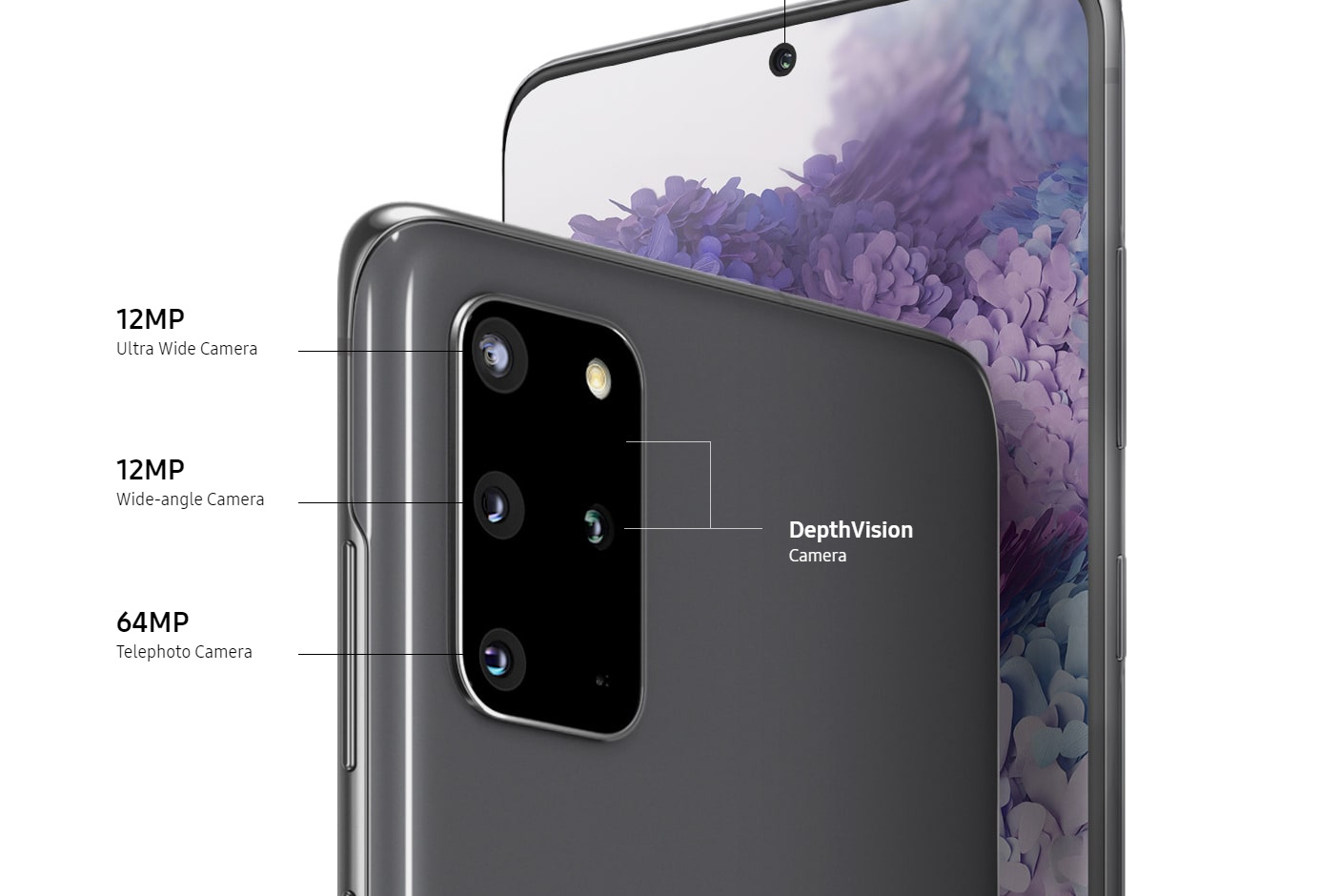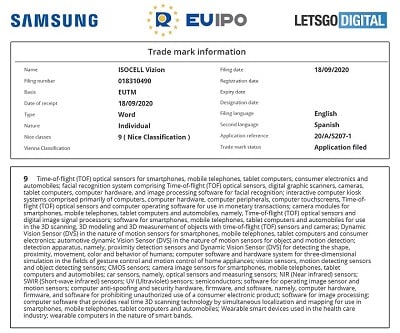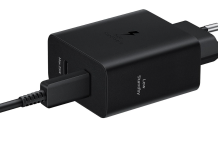Samsung launched its Galaxy Note 20 series just a month ago. However, rumors of the next flagship S21/S30(Tentative) series have already started floating around. And now, Samsung has filed a trademark for the ISOCELL Vizion 3D ToF sensor at EUPIO(European Union Intellectual Property Office) and this could debut on the upcoming S series.

The trademark was first spotted by LetsGoDigital, a well-known publication for patents and trademarks. Applied on September 18 at EUIPO, Samsung has named the trademark “ISOCELL Vizion” and it is classified under Class 9. This class is exclusive to ToF(Time of flight) optical sensors for smartphones, 3D modeling, and measurement with ToF. Additionally, the class also includes Dynamic Vision Sensors(DVS) for detecting shape, proximity, movement, color, and behavior of objects.
All these hints to a possibility that the ISOCELL Vizion could be a ToF sensor. However, early reports suggested that Samsung had planned to ditch the ToF sensor on the next S series of smartphones. Recently, it was speculated that Samsung could include a second Telephoto lens in place of the ToF sensor. Nonetheless, the new trademark leaves a lot of skeptical thoughts on whether Samsung is planning to develop its own ToF sensor.

Editor’s Pick: Samsung announces new 108MP, 64MP, 48MP, and 32MP ISOCELL image sensors
The inefficiency of Samsung’s ToF sensors
In addition to measuring distance and volume, a ToF sensor can perform other functions as well. Some include indoor scanning, object and gesture recognition, and mainly 3D imaging that is useful for AR and VR experience. However, the ToF sensor on Samsung is no match for rivals like Apple.
In fact, it has used an indirect ToF sensor so far which not only requires strong light but also fails to be accurate in long distances. The ToF sensors aka Depth Vision cameras present on flagships like S10, S20 had a maximum range of 3 meters. On the contrary, Apple used a direct ToF sensor with a range of 6 meters.
Has Samsung cracked a way to improve accuracy?
However, Apple procured these via an exclusive deal with Sony. This meant Samsung had to settle with a less efficient sensor. That said, the trademark also corroborates with earlier rumors where Samsung’s System LSI business was said to be developing a direct ToF module.
Up Next: Price Cut: Samsung’s cheapest 2020 smartphone in India is now even more affordable
This suggests that Samsung might have cracked a way to improve the efficiency of the new direct ToF sensors. But these are early speculations and need concrete info to ascertain them. In addition, this new direct ToF sensor could be implemented on the next S series(S21/S30) of devices as well. However, there is no official confirmation yet and we will have to wait for a few more months to confirm the same.







